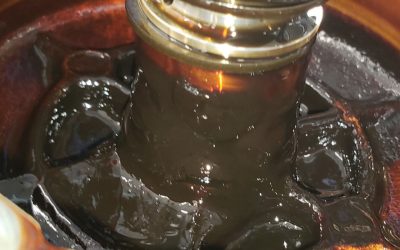Tire Pressure Monitor Systems (TPMS) can be a confusing issue for technicians. Here are some recent updates and clarifications from Nissan to help you better understand and service Nissan and Infiniti vehicles.
Inflating Tires Equipped with TPMS
Improper use of tire inflator tools can break the stem of a TPMS sensor. Broken sensor stems are not covered by the vehicle warranty. Nissan does not recommend the use of the following tools for inflating tires with a TPMS sensor because they can cause damage to or break sensor stems:
- Long heavy hoses with a lock-on air chuck.
- Deep well or dual head air chucks.
- Air chucks with handles or extensions.
These air inflation tools are recommended:
- Shallow well air chucks.
- Air chucks with flexible hoses (no extensions).
Aftermarket Tire Sealants
Aftermarket tire sealants and/or aerosol repair kits should not be used (refer to the vehicle’s Owner’s Manual) because they contain chemicals and propellants that can cause damage to the sensor system.
Damage caused by the use of aftermarket tire sealants contrary to recommendations in the vehicle’s Owner’s Manual is not covered by the Nissan New Vehicle Limited Warranty.
Refer to Nissan Service Bulletin NTB10-114a for more information.
Tire Pressure Information for Vehicles with TPMS
The Low Tire Pressure Warning Lamp will illuminate continuously (not flashing) if the tire pressure is low in any of the four tires. This is not an indication of a malfunction. Rather, it is a signal to the driver that the tire pressure must be adjusted. The tire pressure must be adjusted/corrected to or above the pressure shown on the TIRE AND LOADING INFORMATION label before the Low Tire Pressure Warning Lamp will go off.
The TIRE PRESSURE AND LOADING INFORMATION label lists the COLD tire pressure setting for the original tires on the specific vehicle. NOTE: Tires are considered COLD after the vehicle has been parked for three or more hours or driven less than one mile at moderate speeds.
When setting or adjusting tire pressure, make sure to use an accurate tire pressure gauge. Use the following information for reference:
Temperature
- Tire pressure changes approximately 0.8 psi for every 10°F of temperature change. As temperature decreases, pressure decreases.
- Tire pressure may change 3-5 psi between a COLD reading and a reading taken just after the vehicle has been driven for several miles.
- Seasonal temperature change can result in tire pressure that is low enough to turn on the Low Tire Pressure Warning Lamp.
Example 1 – Seasonal Temperature Changes
- The temperature of the vehicle is 70°F after sitting in the shop.
- Ambient temperature outside the shop is 30°F due to seasonal change.
- Recommended pressure on the TIRE AND LOADING INFORMATION label is 35 psi.
The tire pressure should be compensated an additional +3 psi and adjusted to 38 psi to avoid dropping below the label value when the vehicle experiences cooler ambient air temperature.
Example 2 – WARM Tires
- A vehicle arrives at the shop after being driven across town.
- The WARM tire pressure reading is 32 psi.
- Recommended COLD pressure on the TIRE AND LOADING INFORMATION label is 35 psi.
The tire pressure should be compensated an additional +3 psi and adjusted to 38 psi to avoid dropping below the label value when the tires cool.
Natural Tire Pressure Loss over Time
Vehicle tire pressure can naturally decrease by 1.0 – 1.5 psi per month. This will vary due to seasonal temperature change. After six to eight months, tire pressure may be low enough to turn on the Low Tire Pressure Warning Lamp.
High Altitude
At high altitude locations, a standard tire pressure gauge may show the tire pressure higher than the TPMS system. If the gauge reading is not accounted for, it could result in turning on the Low Tire Pressure Warning Lamp. Standard tire pressure gauge readings increase about 1.0 psi for every 2,200 ft. of altitude increase above sea level (up to 10,000 ft.).
For example, if the TIRE AND LOADING INFORMATION label reads 33 psi, then at an elevation of 5,280 ft., the COLD inflation pressure using a gauge should be increased 2.5 psi to 35.5 psi.
NOTE: After correcting the tire pressure, the vehicle may need to be driven at speeds above 16 mph to activate the TPMS and turn off the Low Tire Pressure Warning Lamp. If pressure compensation for temperature is used, the pressure should be re-checked and adjusted at a later time when the tires are COLD.

Refer to Nissan Service Bulletin NTB08-033c for more information.
TPMS Sensor Seal Leaks

When repairing a TPMS stem seal leak, you can replace just the seal, rather than the entire sensor. Do not replace the entire sensor when only a seal is needed. Please refer to the chart below when ordering the proper seal.
Refer to Nissan Service Bulletin NTB08-032 for more information.
As always, for the latest complete service information on the specific vehicle you are servicing, visit the Nissan Tech Info website at www.nissan-techinfo.com or the Infiniti Tech Info website at www.infiniti-techinfo.com.







0 Comments